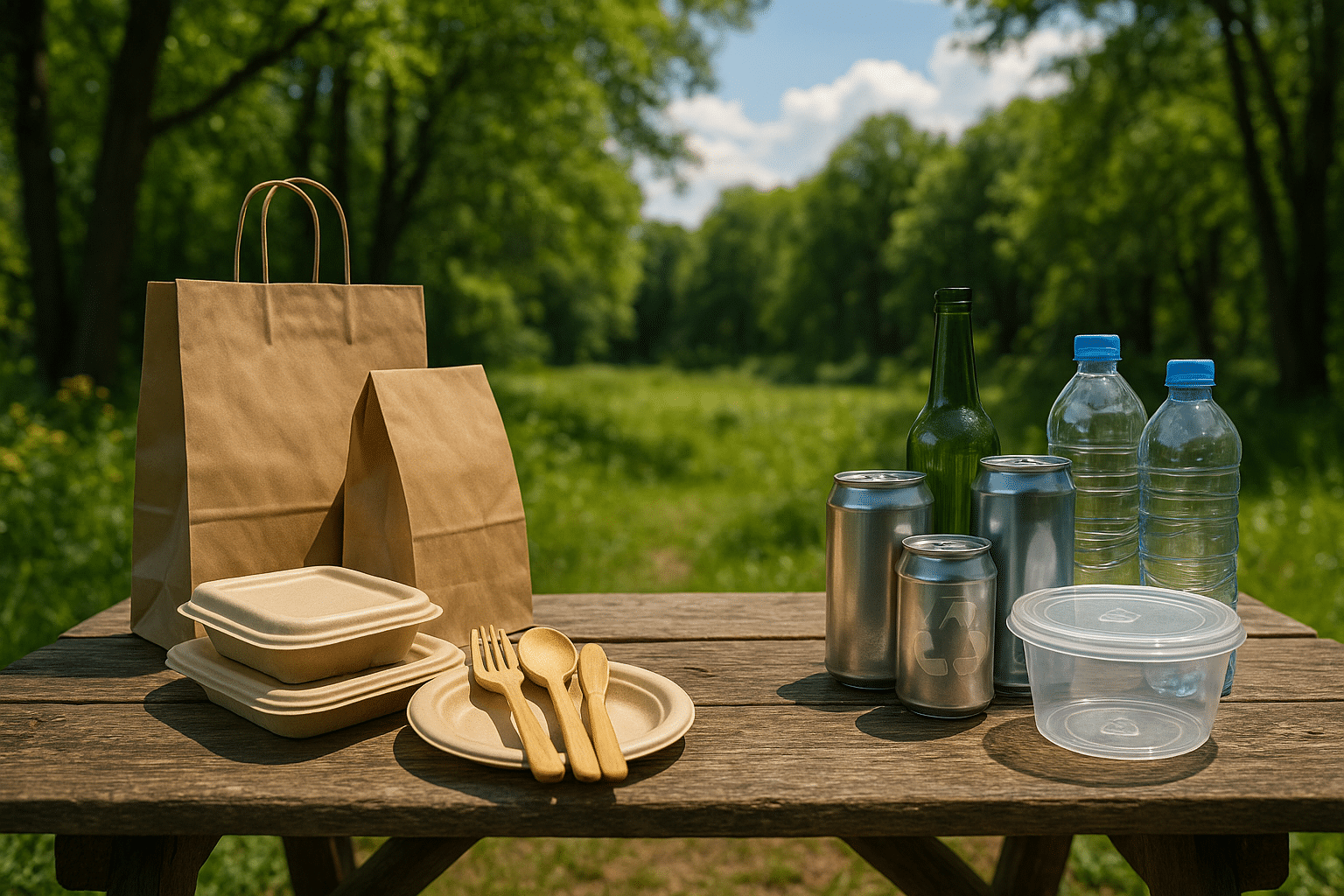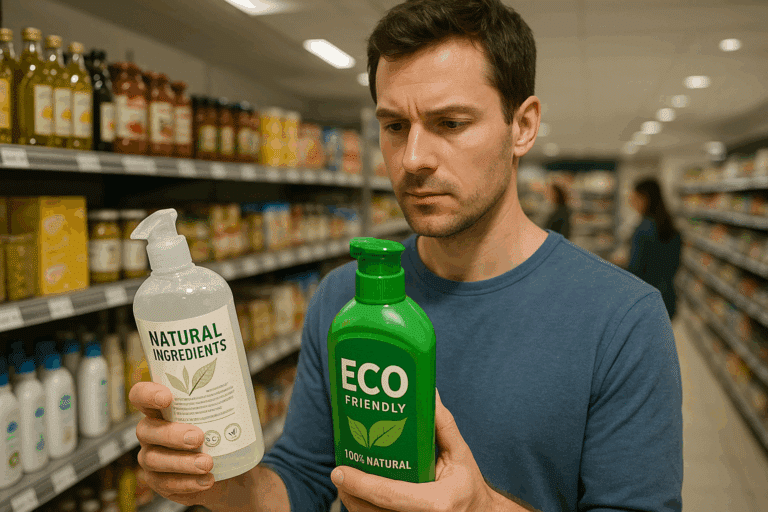One of the key battles being fought on this front is within the consumer goods industry, specifically, the debate between the use of biodegradable vs. recyclable products. 🌍
Both of these eco-friendly solutions have their merits and demerits, and at first glance, it may seem as though there’s a clear winner. However, as with most things in life, the reality is far more complex. It’s crucial to understand the science behind these materials and their impact on our planet to make an informed decision.
This article aims to shed light on the intricacies of biodegradable and recyclable products, analyzing their eco-impact, exploring the technological advancements in these areas, and attempting to answer the burning question: Which is truly better for the planet?
🔬 Understanding the Science
Before we delve into the comparison, it’s important to understand what exactly biodegradable and recyclable mean in the context of materials and waste management. Biodegradable materials are those that can be decomposed by biological organisms, while recyclable materials are those that can be processed and transformed into new products.
However, the terms aren’t as straightforward as they appear. A variety of factors such as the environmental conditions, the presence of specific microorganisms, and even the thickness of the product can significantly affect the degradation process. Similarly, not all materials branded as recyclable are actually recycled due to various logistical and economic factors. Therefore, having a thorough understanding of these processes is vital.
🌳 Biodegradable Products: Pros and Cons
Biodegradable products are often hailed as a fantastic eco-friendly alternative to traditional materials. They break down naturally over time, reducing the overall waste that ends up in our landfills. But, it’s not all sunshine and rainbows 🌈. Factors like the timeline of decomposition and the emission of harmful gases during the process can potentially counteract the benefits.
♻️ Recyclable Products: Pros and Cons
On the other side of the coin, we have recyclable products. They present a compelling solution for reducing waste by transforming old products into new ones. However, the recycling process can be energy-intensive and the effectiveness of recycling varies greatly depending on the material in question.
In the following sections of this article, we will dive deeper into these topics, discussing the environmental, economic, and practical aspects of both biodegradable and recyclable products. We’ll also look into innovative solutions and emerging trends in both fields, as technology and scientific advancements continue to reshape the landscape of eco-friendly consumer goods. 🚀
Whether you’re a consumer looking to make more informed decisions or a professional in the field seeking a deeper understanding of these complex issues, this article is geared to provide valuable insights that contribute to the conversation about our planet’s health. The goal is not to declare a definitive winner, but rather to equip you with the knowledge to make informed choices that align with your values and the needs of our planet. 🌱
Let’s embark on this journey together, exploring the labyrinth of eco-friendly materials and unraveling the complexity of biodegradable and recyclable products. Stay tuned, as the battle is about to get interesting!
The Environmentally Friendly Battle: Biodegradable vs. Recyclable Products
As the global community grows more environmentally conscious, there is an increasing emphasis on the products we use daily. It is not uncommon for consumers to deliberate between biodegradable and recyclable products, with the main question being: which one is better for the planet? This article aims to delve into this eco-friendly showdown to provide you with comprehensive insights.
Understanding Biodegradable Products
Biodegradable products are made from materials that can break down naturally and safely return to the environment. These products are designed to decompose through the action of living organisms, typically within a year. They can come in various forms, including plastics, papers, food waste, and green waste.
Key advantages of biodegradable products include lessening pollution, saving energy as no recycling process is needed, and reducing the volume of waste that goes to the landfill. However, they also have some drawbacks. These include a higher cost of production, potential release of greenhouse gases during degradation, and the fact that not all biodegradable materials break down effectively in landfills due to the lack of oxygen.
Getting to Know Recyclable Products
Recyclable products, on the other hand, are made from materials that can be processed and used again. Common recyclable materials include paper, glass, metal, and certain types of plastic. The recycling process involves collecting, sorting, cleaning, and reprocessing materials into new products.
The main benefits of recyclable products are reducing the need for raw materials, saving energy, and decreasing pollution from waste. However, recycling processes can be energy-intensive and may not be cost-effective for all materials. Furthermore, not all recyclable items end up being recycled due to improper disposal or limitations in recycling facilities.
Biodegradable vs. Recyclable: The Comparative Analysis
Comparing biodegradable and recyclable products involves analyzing various factors such as their environmental impact, cost-effectiveness, and practicality. Below is a comparative analysis to help shed light on their differences.
| Criteria | Biodegradable Products | Recyclable Products |
|---|---|---|
| Environmental Impact | Less pollution but potential greenhouse gas emissions during degradation | Less need for raw materials and pollution from waste but potentially energy-intensive recycling processes |
| Cost-Effectiveness | Higher production costs | May not be cost-effective for all materials |
| Practicality | Can break down effectively under the right conditions | Depends on proper disposal and availability of recycling facilities |
As shown in the table above, both biodegradable and recyclable products have their pros and cons. Your choice between the two should take into account your personal circumstances and priorities.
A Deeper Look into the Environmental Impact
The environmental impact of biodegradable and recyclable products can be quite complex. For instance, while biodegradable products can help reduce landfill waste, they can also contribute to greenhouse gas emissions if not properly managed. Similarly, while recycling can save resources, the recycling process itself can be energy-intensive.
To further understand this topic, check out the video “Biodegradable vs. Recyclable: Which is better for the environment?” by Sustainability Simplified on YouTube. This informative video offers valuable insights on the environmental pros and cons of both options.
Optimizing the Use of Biodegradable and Recyclable Products
No matter which type of product you choose, proper usage is crucial. For biodegradable products, ensure they are disposed of in an environment where they can break down effectively, such as compost bins or green waste collection. For recyclable items, make sure they are clean and correctly sorted before being sent to recycling facilities.
Ultimately, the choice between biodegradable and recyclable products does not have to be a binary one. A balanced approach that combines the use of both, along with efforts to reduce waste and consumption overall, can have a significant positive impact on our planet.
Embracing an Eco-Friendly Lifestyle
Choosing between biodegradable and recyclable products is just one aspect of leading an eco-friendly lifestyle. There are many other steps we can take, such as reducing energy consumption, choosing renewable energy sources, reducing water waste, and supporting businesses that prioritize sustainability.
The journey to a more sustainable lifestyle can seem overwhelming at first, but remember that every small step counts. By making informed decisions about the products we use, we can collectively contribute to a healthier planet.
Further Learning and Action
If you’re interested in learning more about sustainability and how you can make a difference, there are numerous resources available. From online courses to community groups, the opportunities for further learning and action are vast. Start today, and together, let’s make a difference for our planet’s future.

Conclusion
In conclusion, the importance of the topics discussed in this article cannot be overemphasized. We have delved into the realms of Software Engineering, exploring the diverse, complex yet intriguing aspects that define its essence.
We began by understanding the concept of Software Engineering and its crucial role in modern-day technology. This topic formed the backbone of the article and served as a foundation upon which the subsequent points were built. We took a technical dive into the intricate workings of software development, stressing the importance of accuracy, efficiency, and user-friendliness in creating successful software applications.
Further, we expounded on the different stages of the software development lifecycle (SDLC), highlighting the sequential processes involved in software production, from the initial phase of requirement gathering to the final stage of maintenance.
The profound insights on Agile methodology was another highlight. Agile methodology, with its emphasis on flexibility and continuous improvement, has revolutionized the way software is developed and delivered, contributing to the acceleration of technological advancement.
Finally, we reviewed some of the widely used programming languages in software engineering and their specific uses, citing concrete examples in various fields. Each language, with its unique syntax and usage, provides the necessary tools for programmers to create software applications that suit diverse needs.
The technical yet comprehensive approach adopted in this article was deliberate. It was aimed at ensuring a balance between detailing the complexities of Software Engineering and presenting the information in a digestible manner.
Your feedback on this article is highly appreciated. Do you agree with the points raised? Are there other aspects of Software Engineering you would like to know more about? Please feel free to share your thoughts in the comment section below. You can also share this article with others to spread the knowledge.
Don’t hesitate to apply the insights gathered from this article in your software development projects. Remember, continuous learning and application are keys to becoming proficient in software engineering.
You can find more information on Software Engineering from credible sources like [IEEE Software Magazine](https://www.computer.org/technical-committees/software-engineering/) and [ACM SIGSOFT – The Association for Computing Machinery’s Special Interest Group on Software Engineering](https://www.sigsoft.org/). Both offer a wealth of information, from current trends to in-depth articles on specific topics. 😊
In the grand scheme of things, Software Engineering is a continuously evolving field, and staying abreast of the latest trends is paramount. Therefore, it is my hope that this article served as a useful guide in your journey to understanding and mastering Software Engineering. As you delve deeper into this field, may you find it as intriguing and fulfilling as I do. 😊
IEEE Software Magazine
ACM SIGSOFT – The Association for Computing Machinery’s Special Interest Group on Software Engineering
Happy coding! 🚀
References:
IEEE Software Magazine
ACM SIGSOFT – The Association for Computing Machinery’s Special Interest Group on Software Engineering



